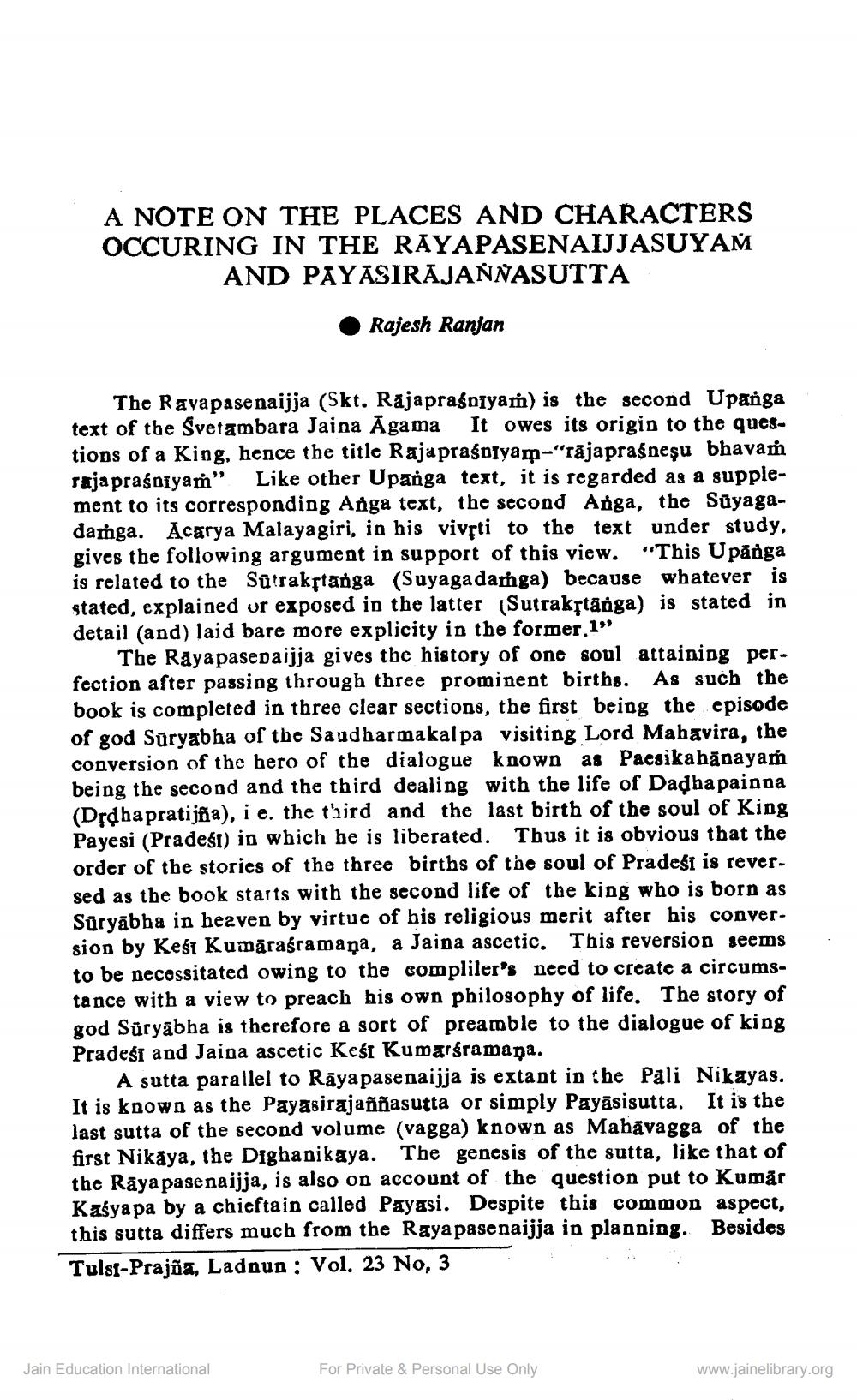________________
A NOTE ON THE PLACES AND CHARACTERS OCCURING IN THE RAYAPASENAIJJASUYAM AND PAYASIRAJANNASUTTA
Rajesh Ranjan
The Ravapasenaijja (Skt. Rajapraśniyaṁ) is the second Upanga text of the Svetambara Jaina Agama It owes its origin to the questions of a King, hence the title Rajapraśniyam-"rajapraśneşu bhavaṁ rajapraśniyam" Like other Upanga text, it is regarded as a supplement to its corresponding Anga text, the second Anga, the Süyagadamga. Acarya Malayagiri, in his vivrti to the text under study, gives the following argument in support of this view. "This Upanga is related to the Sutrakṛtanga (Suyagadamga) because whatever is stated, explained or exposed in the latter (Sutrakṛtānga) is stated in detail (and) laid bare more explicity in the former.1"
The Rayapasenaijja gives the history of one soul attaining perfection after passing through three prominent births. As such the book is completed in three clear sections, the first being the episode of god Suryabha of the Saudharmakalpa visiting Lord Mahavira, the conversion of the hero of the dialogue known as Paesikahanayaṁ being the second and the third dealing with the life of Dadhapainna (Drdha pratijña), i e. the third and the last birth of the soul of King Payesi (Pradest) in which he is liberated. Thus it is obvious that the order of the stories of the three births of the soul of Pradest is reversed as the book starts with the second life of the king who is born as Suryabha in heaven by virtue of his religious merit after his conversion by Kest Kumāragramaņa, a Jaina ascetic. This reversion seems to be necessitated owing to the compliler's need to create a circumstance with a view to preach his own philosophy of life. The story of god Süryabha is therefore a sort of preamble to the dialogue of king Pradest and Jaina ascetic Kest Kumarśramaņa.
A sutta parallel to Rayapasenaijja is extant in the Pali Nikayas. It is known as the Payasirajaññasutta or simply Payasisutta. It is the last sutta of the second volume (vagga) known as Mahavagga of the first Nikaya, the Dighanikaya. The genesis of the sutta, like that of the Raya pasenaijja, is also on account of the question put to Kumar Kasyapa by a chieftain called Payasi. Despite this common aspect, this sutta differs much from the Rayapasenaijja in planning.
Besides
Tulst-Prajña, Ladnun: Vol. 23 No, 3
Jain Education International
For Private & Personal Use Only
www.jainelibrary.org




